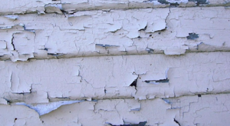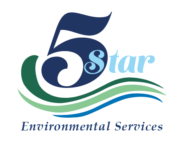Reference sources
Asbestos Testing
Asbestos is a mineral fiber that occurs in ro ck and soil. Because of its fiber strength and heat resistance asbestos has been used in a variety of building construction materials for insulation and as a fire retardant. Asbestos has also been used in a wide range of manufactured goods, mostly in building materials (roofing shingles, ceiling and floor tiles, paper products, and asbestos cement products), friction products (automobile clutch, brake, and transmission parts), heat-resistant fabrics, packaging, gaskets, and coatings.
ck and soil. Because of its fiber strength and heat resistance asbestos has been used in a variety of building construction materials for insulation and as a fire retardant. Asbestos has also been used in a wide range of manufactured goods, mostly in building materials (roofing shingles, ceiling and floor tiles, paper products, and asbestos cement products), friction products (automobile clutch, brake, and transmission parts), heat-resistant fabrics, packaging, gaskets, and coatings.
 Asbestos fibers may be released into the air by the disturbance of asbestos-containing material during product use, demolition work, building or home maintenance, repair, and remodeling. In general, exposure may occur only when the asbestos-containing material is disturbed or damaged in some way to release particles and fibers into the air.
Asbestos fibers may be released into the air by the disturbance of asbestos-containing material during product use, demolition work, building or home maintenance, repair, and remodeling. In general, exposure may occur only when the asbestos-containing material is disturbed or damaged in some way to release particles and fibers into the air.
Of course, exposure to asbestos increases your risk of developing lung disease. That risk is made worse by smoking. In general, the greater the exposure to asbestos, the greater the chance of developing harmful health effects. Three of the major health effects associated with asbestos exposure are: lung cancer, mesothelioma, a rare form of cancer that is found in the thin lining of the lung, chest and the abdomen and heart, and asbestosis, a serious progressive, long-term, non-cancer disease of the lungs.
Generally, you can’t tell whether a material contains asbestos simply by looking at it, unless it is labeled. If in doubt, treat the material as if it contains asbestos and leave it alone. 5 Star Environmental Services can perform an inspection of the subject property and take samples, which are sent to a certified laboratory for analysis. The entire laboratory report is forwarded to you along with the surveyor’s Environmental/Survey Report, which includes the recommendations for the proper mitigation process to make your living/work environment a healthier place to live in. The total fee for this service is determined by the total number of laboratory samples that are taken.
Note – for more information on asbestos visit – epa.gov/asbestos
To schedule a asbestos test or to have any questions answered just call – 404-316-4876
LEAD PAINT TESTING

Lead is a highly toxic metal that was used for many years in products found in and round homes built before 1978. Some products today that are being imported from foreign countries still have high levels of toxic lead paint. Lead can be found in paint, dust and soil, in the air, in water and disposal of lead wastes.

Lead paint testing is performed by using the approved EPA guidelines for contractors or renovators. Evaluation areas will cover both exterior and interior with a minimum of at least 20 samples from random areas by using an approved EPA test kit #1. This method requires the contractor to cut through layers of paint with a utility knife making a cut approximately one inch long by 1/8 inch wide. In most cases the intrusive or property destructive samples are taken in inconspicuous areas that were not normally visible.
5 Star Environmental Services fee for this lead paint testing is calculated on the size and age of structure to be tested. The Lead Paint Testing Report is usually issued the same day the samples were taken.
Note – for more information on lead paint visit – epa.gov/lead
To schedule a lead paint test or to have any questions answered just call – 404-316-4876
WATER TESTING
 Testing for water quality is important because it identifies contaminants and prevents water-born diseases. If your home is served by a municipal water system, get a copy of your annual water quality report before you test your water. This report will tell you what contaminants have been found in your drinking water and at what level. After you have read the report, you may wish to test for specific contaminants, such as lead, that can vary from house to house or any other contaminant you may be concerned about.
Testing for water quality is important because it identifies contaminants and prevents water-born diseases. If your home is served by a municipal water system, get a copy of your annual water quality report before you test your water. This report will tell you what contaminants have been found in your drinking water and at what level. After you have read the report, you may wish to test for specific contaminants, such as lead, that can vary from house to house or any other contaminant you may be concerned about.
 If your water source is a private well, you are responsible for making sure that your water quality is safe to drink. Test your private well annually for total coliform bacteria, nitrates, total dissolved solids, and pH levels. If you suspect the presence of other contaminants, such as radon and pesticides, you should test for those also. You can also contact your local health department to find out what substances may be common in your area’s groundwater.
If your water source is a private well, you are responsible for making sure that your water quality is safe to drink. Test your private well annually for total coliform bacteria, nitrates, total dissolved solids, and pH levels. If you suspect the presence of other contaminants, such as radon and pesticides, you should test for those also. You can also contact your local health department to find out what substances may be common in your area’s groundwater.
Testing water for quality purposes, especially if your water system is on a private well, is very essential for health purposes. 5 Star Environmental Services can collect these samples for a certified laboratory to test for contaminants. The fee for this service is determined by the number of contaminants that the certified laboratory will be testing for.
Note – for more information on well water visit – epa.gov/privatewells
To schedule a water test or to have any questions answered just call – 404-316-4876
